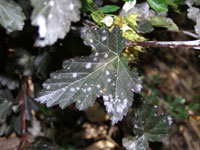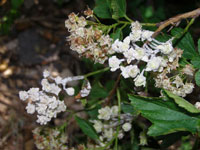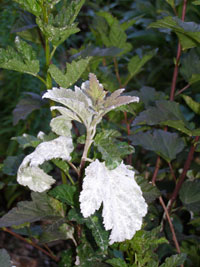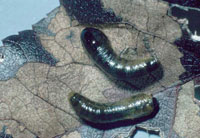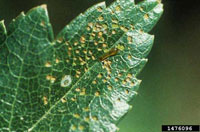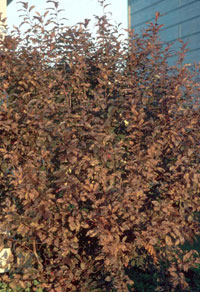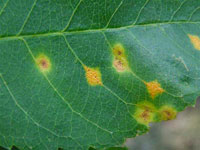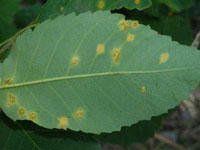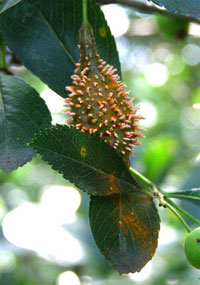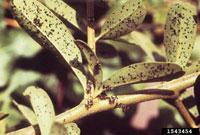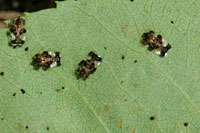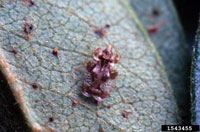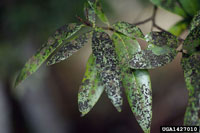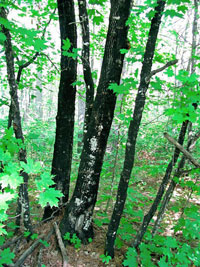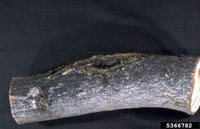Extension > Garden > Diagnose a problem > What's wrong with my plant? > Deciduous > Cotoneaster > Spots or blotches on leaves
Cotoneaster > Leaves > Spots or blotches on leaves
1 of 5
Powdery Mildew
Podosphaera clandestina
- Patches of white, powdery or felt-like fungal patches on leaf surfaces
- Leaves and shoots may be puckered or distorted
- New leaves and shoots may be smaller than normal
- Powdery white fungal growth may be present on ripened berries
- Symptoms may develop over a single season, or over several years
- More information on powdery mildew
2 of 5
Pear Sawfly (Pear Slug)
Caliroa cerasi
- Larvae feed on upper surface of leaf between the veins, "windowpaning" the leaf as they feed
- Damaged leaves often have a grayish appearance before turning brown
- Larvae normally feed about 4 weeks beginning in June; a second generation may start in August
- Larvae are one half inch long, shiny and slug-like and are normally dark olive green in color
- More information on Pear Sawfly
3 of 5
Quince Rust
Gymnosporangium clavipes
- Fruit becomes covered with orange tube-like spore producing structures
- Powdery orange colored spores are released in midsummer to fall
- Spindle-shaped swellings occur on petioles and green twigs
- Cankers may form on stems and cause dieback
- Occasionally yellow to orange leaf spots form
- More information on Quince Rust
4 of 5
Hawthorn Lacebug
Corythuca cydoniae
- Feed on underside of leaves causes yellowish pin-prick stippling on upper surface
- Small drops of varnish-like excrement is found on underside of leaves
- Heavy feeding may cause damaged areas to coalesce forming blotches
- Active throughout the growing season, although damage is most noticeable during late summer
- Adults are .125 to .25 inches long, have light colored bodies with black bands with ornately sculptured wings that are flat and lacey from above.
- More information on Hawthorn Lacebug
5 of 5
Sooty Mold
- Black, brown or gray soot-like covering on leaf surfaces, twigs or branches
- Sticky, shiny secretions on leaves from sap-sucking insects (e.g., wooly apple aphid)
- Insects or signs of insect damage (distorted, pin-prick feeding marks, etc.) may be seen on leaves or twigs above the most heavily affected moldy areas.
- More information on Sooty Mold



